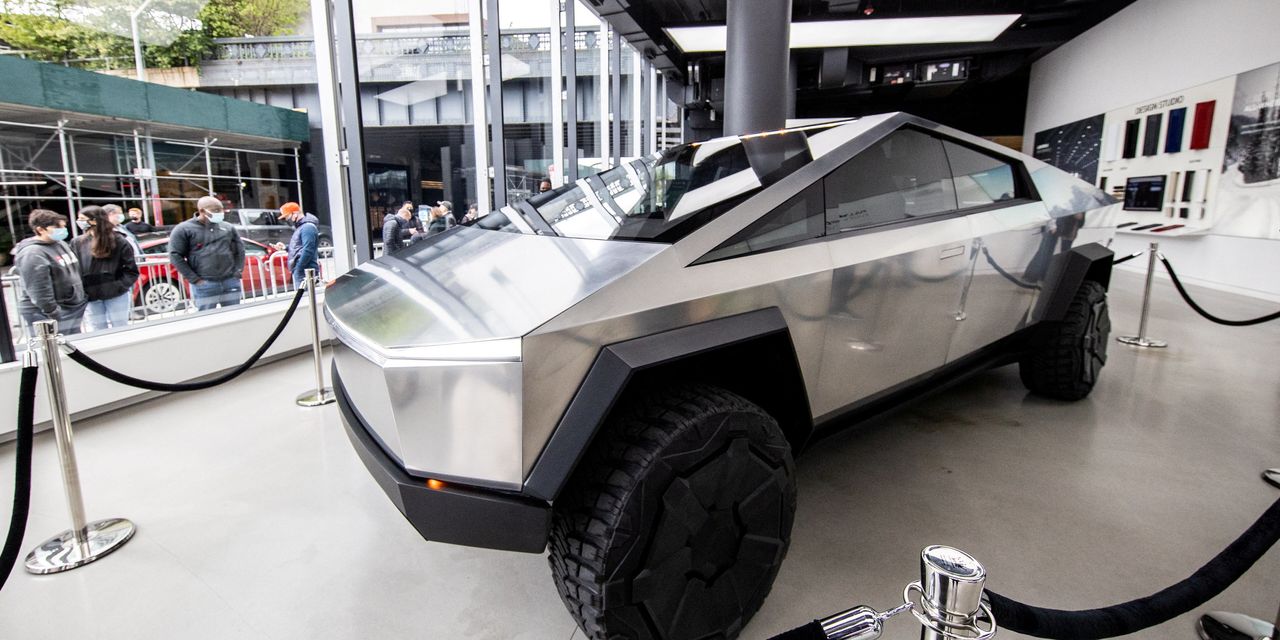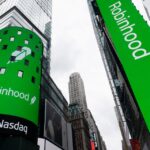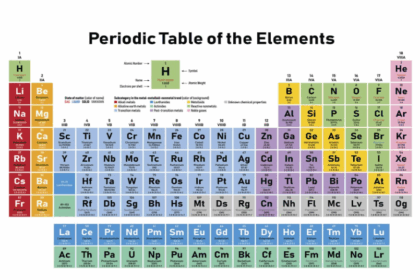
Elon Musk is betting that he can turn Tesla Inc. TSLA 10.68% into one of the world’s largest car makers while selling just a handful of models, challenging a long-held auto-industry belief that it takes a diverse stable of updated models to attract buyers.
It is another example of Mr. Musk’s defiance of industry orthodoxy—at a time when electric-vehicle competition has never been fiercer.
Tesla, which is aiming to increase vehicle deliveries by an average of 50% a year, doesn’t plan to bring any new models to market in 2022, Mr. Musk said this week. The company has punted production of its long-awaited Cybertruck pickup to 2023, he said, and isn’t working on the $25,000 car he previously teased.
Such delays are likely to make it difficult for Tesla to maintain its rapid pace of growth, Bernstein analyst Toni Sacconaghi said, questioning whether demand for the Model 3 and Model Y would be sufficient by 2024 for the company to meet its growth targets.
If Tesla were to increase vehicle deliveries by its 50%-a-year target, it likely would need to deliver more than three million vehicles in 2024. Its Model 3 sedan and Model Y compact sport-utility vehicle made up 97% of Tesla’s roughly 936,000 deliveries last year.
“There’s really no precedent for a single-model car to sell 1.5 million units per year, let alone two of them from the same company,” Mr. Sacconaghi said.
Toyota Motor Corp.’s TM 2.75% Corolla was the most popular vehicle in the world in 2020, with sales of more than 1.1 million vehicles, according to a Bernstein analysis.
Mr. Musk dismissed such concerns, telling analysts that Tesla’s advanced driver-assistance technology would make its vehicles more useful and, therefore, valuable.
“It’s apparent from the questions that the gravity of Full Self-Driving is not fully appreciated,” he said. “If the cost of our cars did not change at all, we would still sell as many as we could possibly make.” Full Self-Driving is a suite of advanced driver-assistance features that Tesla sells for $12,000. It doesn’t yet make vehicles autonomous.
Tesla’s production delays were met with skepticism on Wall Street, where the stock plunged more than 11% on Thursday, the day after Tesla reported a record annual profit of $5.5 billion for 2021. The stock recovered some of that decline Friday, rising 2.1%.
“‘It’s apparent…that the gravity of Full Self-Driving is not fully appreciated.’”
Tesla’s focus on ramping up production of existing models is likely to help the company pad its bottom line this year, but delaying the release of new models could eventually leave it more vulnerable to competition, analysts said. Car companies typically aim for 10% to 15% of their models in any given year to have recently undergone a significant update, Barclays analyst Brian Johnson said.
Mr. Musk has kept buyers waiting for new models before. The company’s Model X sport-utility vehicle, for example, was initially slated for production in late 2013. Roughly two years later, Tesla had delivered only a handful of the SUVs.
This time around, buyers have a bevy of alternative electric vehicles to choose from. General Motors Co. GM 4.96% has said it is aiming to introduce 30 new electric vehicles globally by 2025. This year alone, auto makers are expected to launch more than two dozen battery-powered vehicles in the U.S., according to Bank of America. Among them is an electric version of Ford Motor Co. F 3.89% ’s F-150 pickup truck. Rivian Automotive Inc., which went public in November, was the first to market in the lucrative pickup truck segment, launching its R1T last year.
“Every day Tesla waits, there’s going to be a new entry,” said Tyson Jominy, who leads research firm J.D. Power’s data and analytics practice.
Ford’s experience roughly a century ago could offer a warning to Tesla, said Mr. Johnson, the Barclays analyst, in a recent note to investors. Ford controlled roughly 60% of the U.S. auto market in 1921 thanks to the success of the Model T, he wrote. Ford focused on the Model T in the years to come, but as it did so, rivals including General Motors released a wider range of cars that whittled away at Ford’s market share, which by 1927 had fallen to 16%.
“With little additional detail around future physical product, we see risk of Tesla repeating the Ford Model T history of the 1920s,” Mr. Johnson wrote.
Tesla didn’t immediately respond to a request for comment.
Mr. Musk has made his mark by steering an independent course in the car industry, defying doubters. He invested in all-electric vehicles when many industry stalwarts questioned their viability, eventually transforming Tesla into the world’s most valuable car maker and himself into the world’s richest person.
Tesla’s ability to meet its production targets with its existing lineup of vehicles is likely to depend heavily on the company’s success in China, the world’s largest auto market, said Mark Wakefield, a managing director at consulting firm AlixPartners LLP.
Tesla’s Shanghai plant became the company’s largest by output last year, but Tesla is facing a more difficult business environment in China, where it has been caught up in the government’s crackdown on big tech.
Mr. Musk, in Tesla’s analyst call, focused on the promise of the company’s efforts to develop fully autonomous vehicles.
“Over time, we think Full Self-Driving will become the most important source of profitability for Tesla,” Mr. Musk said, adding on Thursday that it would likely take rivals at least five years to emulate Tesla’s technology.
Tesla News
Read more articles, as selected by editors.
Write to Rebecca Elliott at [email protected]
Copyright ©2022 Dow Jones & Company, Inc. All Rights Reserved. 87990cbe856818d5eddac44c7b1cdeb8








